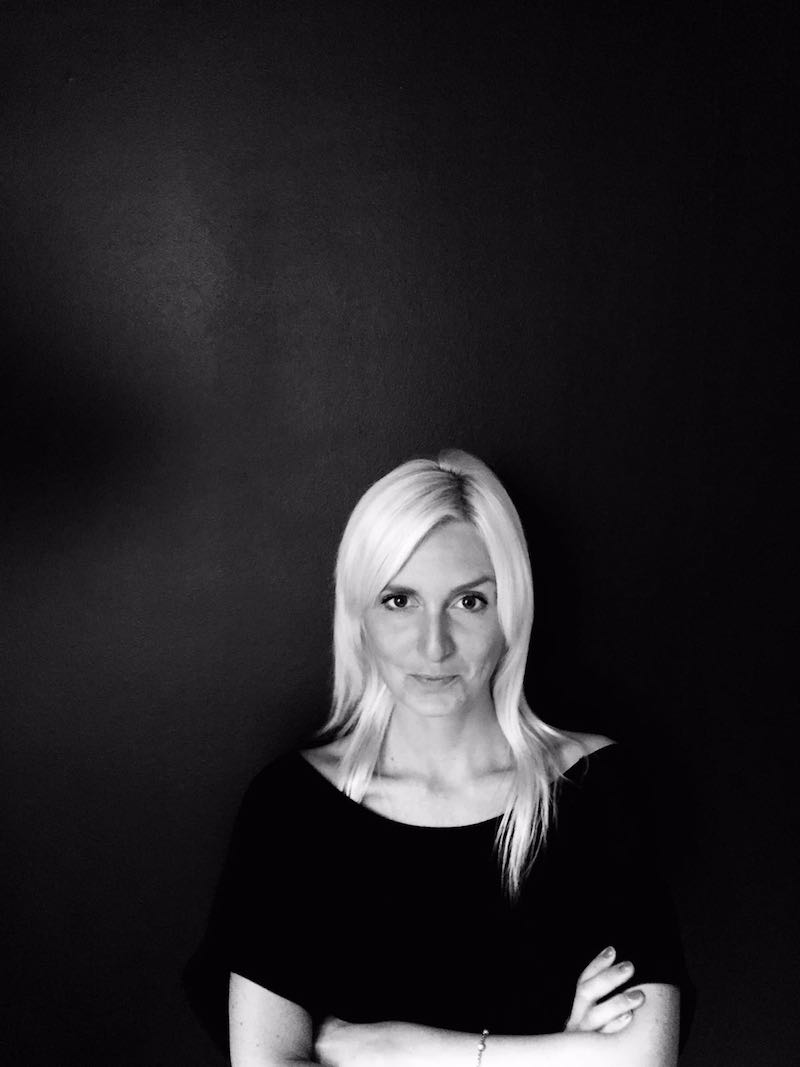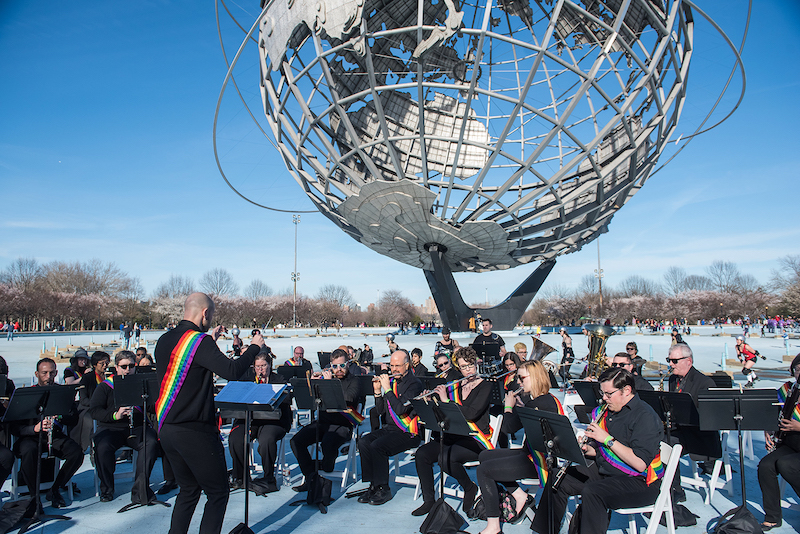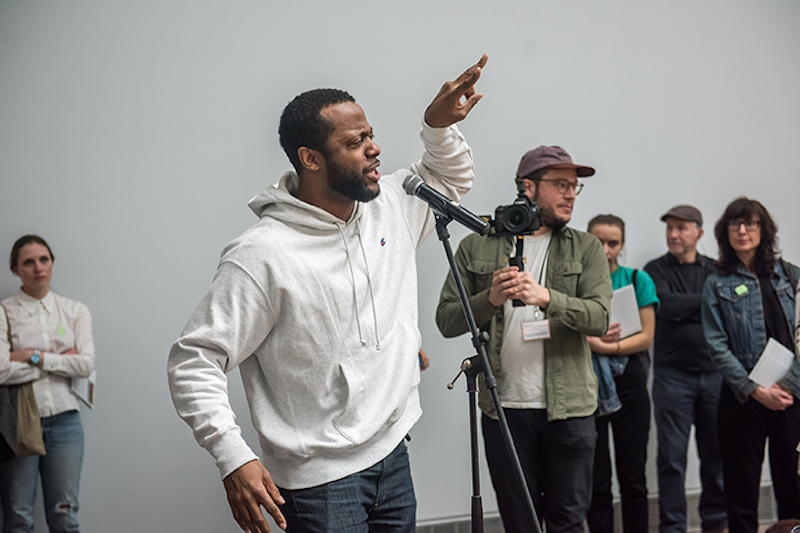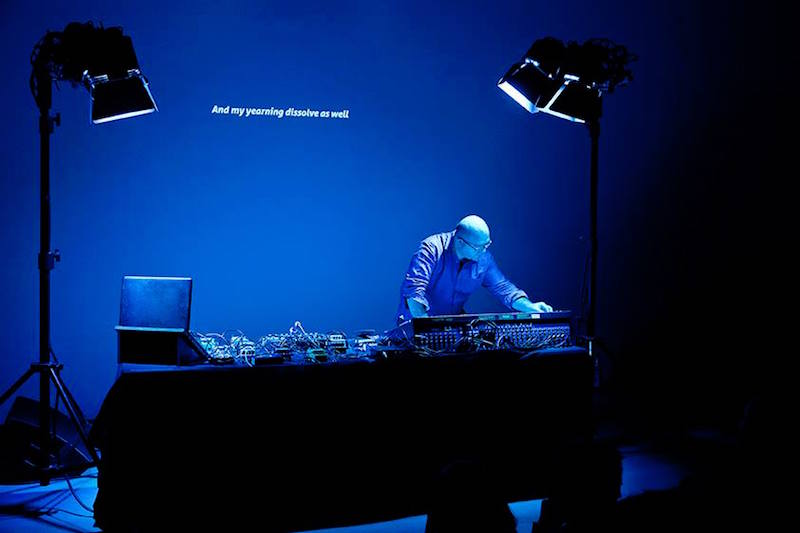
Irene Campolmi, photo © Luca Cucinotta
Based in Copenhagen, the Italian curator and researcher Irene Campolmi creates networks: with conferences, talks and symposia, she connects international figures of the art world – artists, curators, researchers, art dealers, collectors – to gather and discuss relevant themes, bring people with different skills together and to articulate responses to current political, social and ecological changes. Having previously organised conferences at Louisiana Museum of Modern Art, the Max-Planck Institut / Kunsthistorisches Institut in Florence, and having curated several exhibitions, she currently curates the Talks, Film and Performance program Art ReActs at this year's CODE Art Fair in Copenhagen (31.08-03-09.2017). I spoke to Irene about the key themes she chose for the debates, the artistic participants she selected and about whether an art fair is the right place to hold an academic event.
Anna-Lena Werner: Irene, you work as a curator and a researcher for contemporary art. Doing both, how do you think those two practices relate and how do their differ from each other?
Irene Campolmi: There is an excellent quote by artist Jannis Kounellis that says “Finding your style is gracefulness”. Somehow, I think it reflects the way I have conducted research and worked as a curator over the past years. I have always felt the need to turn the research I do into a something – an exhibition, a public program, a conference – that people could experience and be part of. Curating is a dialogic form to conduct research, which goes less into depth rather than academic studies in the topics it touches, but using a more open structure that allows the curator/researcher to think in a less stigmatised way. Curating is founded on the dialogue with artists, other researchers and in general with the world that you confront your thoughts and practice with. Academic research is, instead, the result of an abstraction from that world. These two practices reflect the Latin conception of ‘vita activa’ and ‘vita contemplativa’, i.e. a life that finds in action a means to relate and confront the world, and another that is detached from the main events and that allows one to develop considerations on one’s position in the world. We all need both lifestyles, so I don’t see the problem for a researcher/curator to adopt them in the professional life.
ALW: You write a PhD on the curatorial tasks of “The Art Museum of the 21st Century” and how sustainable concepts and ethical decisions play into the future of curating. Can you tell me a bit about this research and what inspired you to write it?
IC: The PhD project is the result of the collaboration between Aarhus University and the Louisiana museum of modern art in Denmark. The idea behind the whole project was to conduct a survey of the trends and changes endorsed by modern and contemporary art museums since the early 2000s. I wanted to emphasise the changing role of modern and contemporary art museums from places of cultural production into institutions made of and for the people. Art museums have broadened their scope to have an impact on society by promoting cultural diversity, fostering social integration and mostly by re-reading history through exhibitions and collection displays. I have investigated the flexible and resilient curatorial approach that art museums have endorsed over the past years to accept and adapt to the world, which is changing fast around them. I have called ‘curatorial ethics’ the open approach with which art institutions are rethinking their collecting and displaying strategy along with the narratives that emerge through the exhibitions and the public program initiatives. Being flexible to changes, resilient but also proactive are some of the characteristics denoting what I call ‘curatorial ethics’. I suggest that embracing curatorial ethics has allowed contemporary art institutions to hold a role as promoters of culture, social integration, diversity and inclusion. This has – for now – ensured the art museum’s sustainability in the art world ecosystem.
ALW: You currently curate ArtReActs, the talks, films and performance program, at this year’s CODE art fair in Copenhagen. Was there an overall thread or goal that influenced your selection of focused, participants and contributors?
IC: This program is the result of on-going conversations I have been having with the artists and curators I invited over the past months. This is to restate that the curatorial practice is always a discourse situated in a larger conversation and thus, often is initiated by and with dialogue. Since the very beginning, I wanted to bring together those people whose practice and voices have been particularly significant for my curatorial and research approach within the past years. All the artists I have worked with for the Art ReActs program demonstrate that artistic practice could potentially impact society on many levels. The event dedicated to performance and located in the city centre of Copenhagen, Code on Sunday, was structured and conceived this year around Marinella Senatore’s procession/performance called “Copenhagen Symphony”. I wished to see people marching, dancing and singing in a secular parade celebrating diversity, love and integration through individual and collective talents. The opening concert, instead, performed by Peter & the Danish Defence will present an on-going body of visual material and music that the artist wrote in collaboration with the Danish army to foster mutual understanding between civilians and soldiers as an essential aspect of raising a meaningful debate about being at war and being against war. The overall goal of the program is to raise attention on artistic and curatorial practice that offers a way to talk and look at the world we live from an alternative, still engaged and passionate, perspective.

 Above: Ase Dance Theatre Collective, below: Lesbian & Gay Big Apple Corps Symphonic Band. Both were part of Marinella Senatore’s public performance Protest Forms: Memory and Celebration: Part II / Queens Museum New York City, 2017
Above: Ase Dance Theatre Collective, below: Lesbian & Gay Big Apple Corps Symphonic Band. Both were part of Marinella Senatore’s public performance Protest Forms: Memory and Celebration: Part II / Queens Museum New York City, 2017

 Above: Ase Dance Theatre Collective, below: Lesbian & Gay Big Apple Corps Symphonic Band. Both were part of Marinella Senatore’s public performance Protest Forms: Memory and Celebration: Part II / Queens Museum New York City, 2017
Above: Ase Dance Theatre Collective, below: Lesbian & Gay Big Apple Corps Symphonic Band. Both were part of Marinella Senatore’s public performance Protest Forms: Memory and Celebration: Part II / Queens Museum New York City, 2017
ALW: The focuses address large key issues relevant to the arts today. One of the talks will, for example, involve a discussion on “The Ecology Paradigm” and how current artistic and curatorial practice reflects on climate change. What issues do you hope to raise within this discourse?
IC: With this panel, I wanted to address the ecology paradigm, specifically in the metaphorical use of the term. In recent years, the art system – and specifically, museums and art institutions – has often been equated to the ecosystem of nature. In nature, organisms of an ecosystem adapt to external changes that occur to the ecosystem as a consequence of resilience. If one considers the art world as an ecosystem, curators and artists are required to cope with a constantly changing political, cultural, social and ecological environment and through their practice decide whether to react or resist to these changes. By using ecology as a metaphor, I wished to address curatorial reactions in times of a ‘climate change’, looking at either political or environmental change, which, as you know, are completely entangled. In this panel, the speakers will contribute with different propositions sharing their experience and point of view on the precarious life of art workers, on the political engagement and impact of the curatorial practice, as well as on investigating ecological and environmental disasters through artistic projects. I am myself curious to see the outcome of this panel!
ALW: Another focus lies on the practice of collecting, both from the perspective of museums and private collectors. You invited speakers from the public and the private sector. How do these different positions come together?
IC: Museums are ‘public’ collectors and often display the bequest of a private collector. Art fairs are places where institutions go buying the same way private collectors do. What might change is the scope of the collection, but often collectors are sensitive people who, when buying, think beyond the current taste’s grid, almost anticipating with their choices the next trends in the arts. It has always been like this. Sometimes they might be wrong, but quite often they get to the point. By looking at both private and public collecting throughout the panels, I wished to discuss the latest trends and explore the future ones.


Peter Voss-Knude / Peter & The Danish Defence will perform the opening concert at Code Art Fair.
ALW: Next to a performance program that will take place every day, one of the focuses will raise the question of whether “performance becomes re-action”. What exactly does that mean?
IC: Performance is already a complex term featuring so many definitions and practices. Across institutions, biennials, project spaces, and even the commercial sector, a turn towards performance is emerging within the contemporary art landscape. From Anne Imhof’s Golden Lion-winning Faust at this year’s Venice Biennale to Alexandra Pirici’s outstanding performance “Leaking Territories” in Munster, Tino Sehgal at the Palais de Tokyo in Paris last year and “Ten Days Six Nights“ at London’s Tate Modern last March, the rise of performance-based exhibitions and events have made a splash in Europe. This because performance could be broadly defined as a live practice featuring a script that potentially includes music, dance, poetry, actions, acting of either the artists or performers involved by the artists. Performance could become a form of artistic reaction, because of its immediacy; it brings the medium back into the moment—the here and now—and draws attention to what is going on in one’s immediate surroundings. It creates a communal atmosphere shared by the audience and the performers. Also, performance is an experience of art that unfolds through time. In historical moments like ours, in which things are changing fast – like the rising of Trump and the consolidation of a right white racist ideology, climate change, the precariousness of any job in the creative sector, among others – performance offers an effective, quick means to react and respond to these changes through artistic practice.
 Performance by Marinella Senatore, Photo © Stefanie Berger, taken in a recent performance at the Queens Museum, NYC "Forms of Protest" curated by Matteo Lucchetti
Performance by Marinella Senatore, Photo © Stefanie Berger, taken in a recent performance at the Queens Museum, NYC "Forms of Protest" curated by Matteo Lucchetti
 Performance by Marinella Senatore, Photo © Stefanie Berger, taken in a recent performance at the Queens Museum, NYC "Forms of Protest" curated by Matteo Lucchetti
Performance by Marinella Senatore, Photo © Stefanie Berger, taken in a recent performance at the Queens Museum, NYC "Forms of Protest" curated by Matteo Lucchetti
ALW: The film program features almost 20 positions, including prominent artists such as Keren Cytter and Jesper Just, but also emerging artists, such as Adrien Missika and Andy Holden. Can you tell me about the program that will be screened and how you came to choose these positions?
IC: By drafting the list of artists for Code Film, I wished to propose a perspective on ways artists ‘react’ to the mentioned changes. Each day presents a selection of artists whose work explores the various layers that deal with sexual desire, anxiety, racism, integration, discrimination, love, conflict, understanding of the world, cultures and technology. Thursday, August 31st is dedicated to female artists. The program features prominent figures such as Barbara Hammer and Keren Cytter, as well as emergent ones like Danielle Kwaaitaal, Sofie Thorsen and Larissa Sansour. Their work investigates desire, anxiety, and conflict with social norms in a way that seeks to break free from patterns of representation, or normative sexuality like the case of Barbara Hammer. Friday, September 1st opens the floor to socially and politically engaged film projects with a focus on Hiwa K, Stine Marie Jacobsen, Rainer Ganahl, Moataz Nasr, Raúl Ortega Ayala, and Søren Thilo Funder. Saturday, September 2nd is instead dedicated to the theme “Sound & Vision”, which is also explored by Copenhagen Art Week this year. It presents artists such as Basim Magdy, Jesper Just, Ra di Martino, whose work plays on different levels the combinations between sound, music and visual arts.
ALW: The often underestimated genre of sound art and sound performances, for example by Hassan Khan, will have quite a prominence within the program. Why is that?
IC: Because artists are embracing more and more sound and performance in their hybrid practice, and this phenomenon is likely to increase and expand within the next 5-10 years. Some galleries have started producing these works themselves, so it is critical for art fairs to acknowledge these kinds of works within their artistic programs and anticipate the next steps.
 Hassan Khan, SUPERSTRUCTURE , Muskihus Elvaerket, Holbaek, Denmark, 7th September 2013
Hassan Khan, SUPERSTRUCTURE , Muskihus Elvaerket, Holbaek, Denmark, 7th September 2013
ALW: Having developed the first edition of CODE art fair's talks and performance program, where do you personally think to lie the advantages and the disadvantages of bringing the separate worlds of the art market, practice and theory together?
IC: Excellent and crucial question. Bringing together separate worlds for a temporary event like an art fair creates many and various synergies between people which allow them to connect better in the future. Each of these worlds works independently, despite the fact that their entanglement frequently brings these worlds to be part of the same discourse. At the moment, art fairs offer the physical – and hopefully also intellectual – space for people working in the arts, meaning artists, gallerists, curators, researchers, collectors and journalists, to meet and connect. This happens because there is the need for an art fair to have a cultural impact on the art scene. This effect is created when the organisation enters into a constructive dialogue with those who are players in art practice and theory. The desire of art fairs to act as a forum for cultural debate might probably be just a temporary feature that is soon destined to change. But it is true that the art fair’s broader scope today is to create a meaningful event for the local territory.
Personally, I saw the opportunity to curate Code Art Fair's artistic program as a chance to bring the city curators, artists, performances and concerts that otherwise would not be presented by local art institutions or established art museums. These institutions would frequently privilege Scandinavian artists. Obviously, the greatest risk is to end up creating a rhetoric event which has no impact on the local art scene and which fails in favouring synergies between different worlds. I have done my best to cope with this risk, but of course, one never knows!
www.codeartfair.dk
www.irenecampolmi.com
www.irenecampolmi.com
